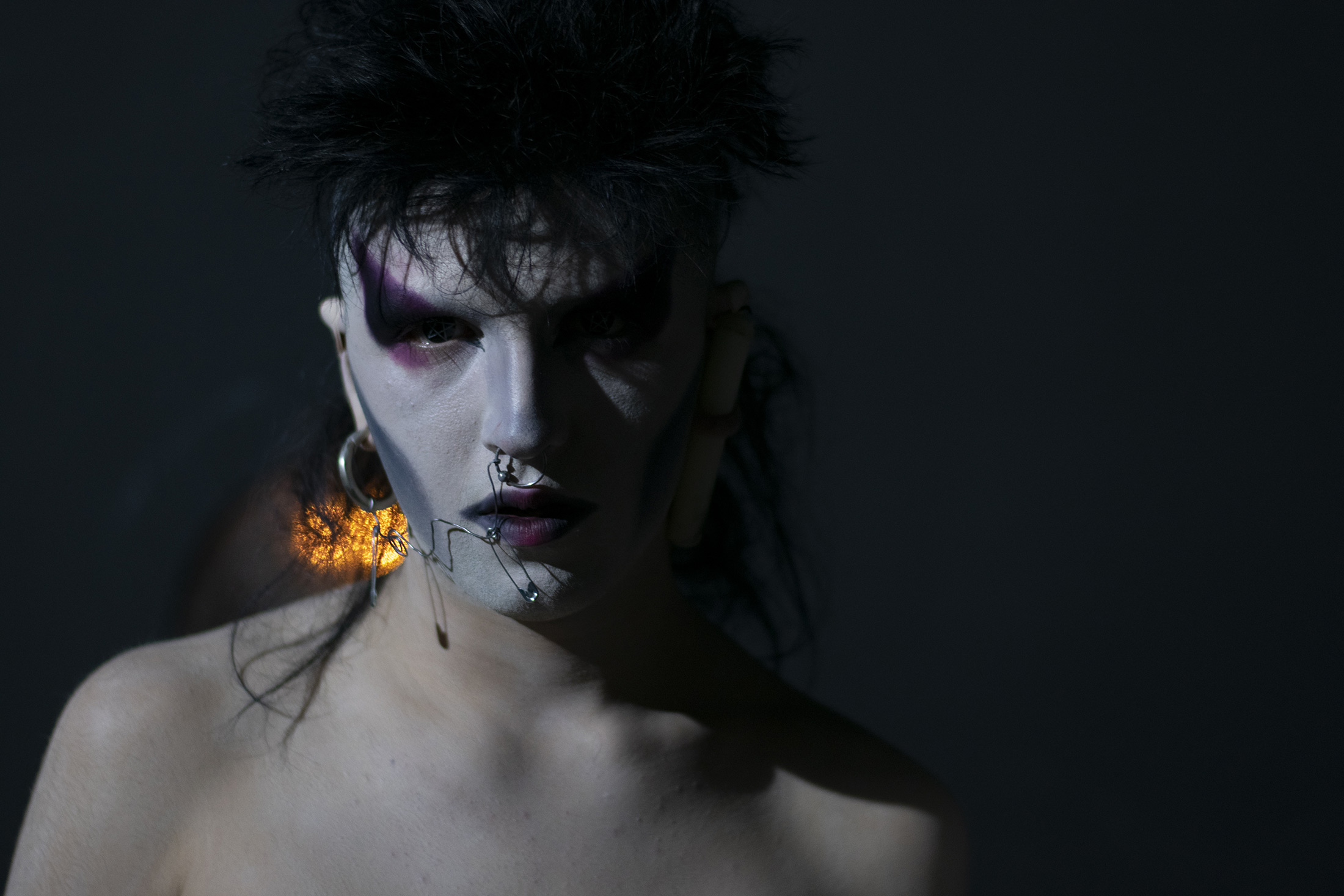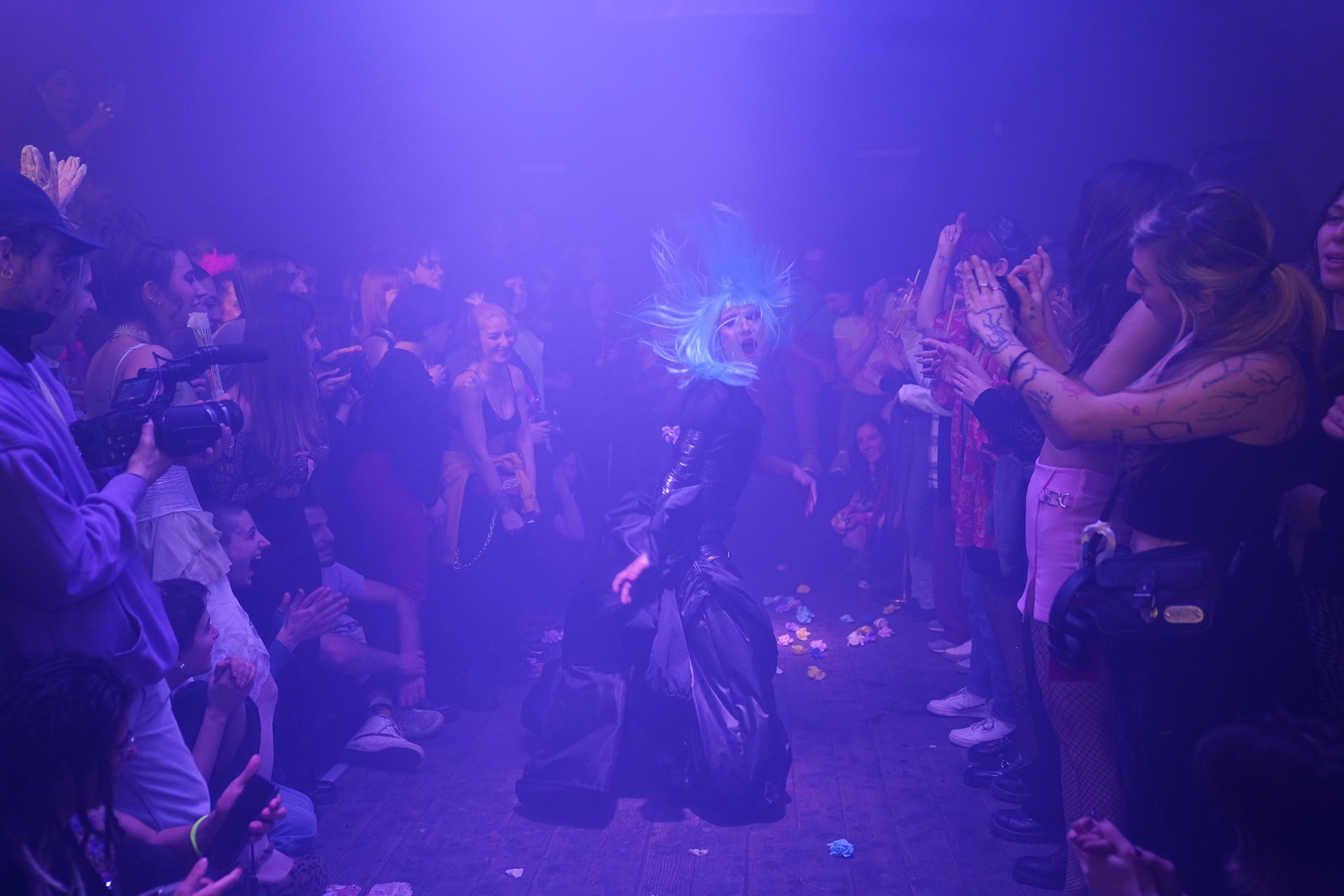Georgia’s queer community finds security, freedom in art
In the nearly ten years since a homophobic mob attacked a peaceful LGBTQI pride demonstration in the Georgian capital Tbilisi, the queer community has been quietly creating safe spaces, especially in the club and underground scene. Queer artists play an important part in creating these safe spaces, bringing the community closer together, giving others hope, the feeling of security and the courage to freely be themselves.
Some queer artists hope that the impact of their work goes beyond the queer community itself and can create awareness and maybe even change the queerphobic attitudes in society. But to show art in public that openly deals with topics like queer rights comes with dangers. Activist and artist Tekla Tevdorashvili experienced this with her installation “Welcome to the closet” which she showed in a public park in Tbilisi in May 2021. The installation consisted of a brightly colored closet. “People could go inside and listen to a voice talking about feelings and emotions queer people might go through when they are in the closet and how it feels to come out,” Tekla explains. The inside of the closet was white—an invitation for the audience to write down or draw their own stories. The installation was targeted not only at a queer audience, but also at non-queer people, who might “go in there and get a sense of it, to understand what it might feel like, to raise their awareness about this topic,” Tekla says. But the installation remained in the park only for a short time before it was attacked and destroyed by an alt right activist.

©Tekla Tevdorashvili

©Tekla Tevdorashvili

©Tekla Tevdorashvili
Creating and showing queer art in Georgia is synonymous with “walking on eggshells,” says Tekla. To minimize the risk of attacks, careful phrasing is necessary. A too direct public announcement can be counterproductive. “I don’t believe you have to hide something,” she clarifies. “But if you phrase it a bit differently, you can actually do more for your cause than by saying: this is queer art.” Being less direct can prevent alt right groups from seeing the importance of mobilizing against something. Tekla believes that even though it can be risky, it’s important to make and show queer art. “I believe that art can change a lot. It raises awareness, it can change the ideologies that people in the society have. And first of all, it empowers the queer community and gives it the opportunity to show itself, which it has been denied for such a long time.”
Some low key projects and places in Georgia give queer artists room to express themselves without putting them on the spot and in danger. Among them are two galleries in Tbilisi. Untitled Gallery was founded three years ago. It is focused on human rights topics and a lot of the works shown there are about queer issues. Located outside the city center, the curators try to connect to the people living in the neighborhood, creating a place that is open and a safe space at the same time.

© Sarah Brik
In April 2022, another gallery opened its doors: Fungus. The project started online, explains David Apakidze, who has been part of the Fungus Collective since its beginning in 2020. “When the pandemic started, queer people were left without any spaces to express themselves, so we thought it would be nice if we created a platform for them.” The project is dedicated to queer artists, but not limited to queer topics, because “queer problems don’t exist separately from other topics,” says David. After online publications and exhibitions in other spaces, Fungus now regularly shows exhibitions in its own rooms. In one of the recent exhibitions Lasha Kabanashvili shows a collection of their recent works under the title “Tragedy of Heromachine.” The gallery floor is covered with grass, several images and objects are placed around the room. They reflect topics like consumer society and its icons, images of heroism, and the binary principles of society. One of Lasha’s works uses AI generated images that reproduce stereotypical representations of male and female. The AI is fed with existing images and so works as a “culture preserver,” explains Lasha. It shows how deep the binary principle is rooted in society. Lasha thinks of their own art as non-binary.
David explains that the Fungus project understands itself as political. “If you’re queer, everything you do is political.” The art shown in the gallery is never just about “expressing feelings.” But being political doesn’t mean that visibility is the goal. In their manifesto, the Fungus collective describes their concept. “Like mushrooms, we do not often appear on the surface, but we grow strong underground and cause intoxication.” David explains that Fungus – the mushroom as well as the gallery – “is a very small thing, but when it starts to grow, it can go anywhere.” They don’t strive for bold visibility in public but focus on little changes, like creating a connection to the neighborhood. “Changing ten people in the neighborhood, that’s already a big goal because these people have children, they have families. Even ten children not raised homophobic is already something. Small changes are big changes.”
David criticizes pride politics and the focus on visibility. “This doesn’t work in Georgia. Visibility here costs a lot. The first time I was bullied was when visibility politics started, when it showed up on television, when it showed up on the internet, when Tbilisi pride was going on, that was the first time when I really thought I could be killed, the first time I had to change my home.” Visibility is not the main problem for queer people in Georgia, says David, and it’s not the goal of Fungus gallery to create this kind of visibility.
The queer musician IAMNIKITA shares this critique. In their music, IAMNIKITA directly addresses the problems of the queer community. For them the main problem is that some care more about pride marches and visibility than about the strength of the community itself. “Now we are not proud. We will be prideful, when we care for each other, and we have trust for each other. Coming out is not the only thing that we need, it’s the last step. That’s what I want to share with my people and society,” says IAMNIKITA.

©KOI. KOI
IAMNIKITA has already been engaged in many musical projects and has experienced different styles, but their first band was a punk band and IAMNIKITA still sees themselves as punk. With their music, IAMNIKITA wants to create a safe space for queer people and to give them the opportunity not to feel alone. “My music is bringing the people together in one spot, where they are safe.” They encourage others to be themselves but also acknowledge that society is not ready for people being openly queer. “I’m not pushing someone to come out, I’m saying: Be yourself, where you feel free and when you feel safe. And I’m giving you my music to be yourself, to be safe for three minutes.”
The music and club scene gives queer people in Georgia the possibility to feel safe and express themselves. “In Tbilisi, every club is LGBTQ+ friendly,” says Flora Kamikadze, a drag queen who has performed at various venues and also likes to visit clubs in drag on regular nights. They have never experienced any negative reactions. Flora started their drag performances in December 2021 and it had a very positive impact on their life. “I can say, I really found myself there,” they say. “The drag helped me with so much stuff, mental stuff, personal life and so on. When I’m in drag, I fully express myself, I really know who I am. And I love myself more than usual.”

©Vakho Kareli
In their drag performances, Flora Kamikadze not just imitates someone or something but creates their own style. Recently Flora has also recorded songs and uses their own music in their drag performances.
While there is still a long way to go and it is still not safe to be openly queer in public, more and more possibilities are emerging for queer people to express themselves in various creative forms. “Five or ten years ago it would have been hard for me to imagine that there was a place like Fungus Gallery that deals with queer issues,” Giorgi Kikoria, who works at Untitled Gallery, says. “Now visibility and awareness increase. More people are ready to do their thing.” While homophobic attitudes in society are not likely to change anytime soon, art helps the queer community to become stronger and gives queer people room to be themselves without fear.
Cover Photo: Tikuna Adeishvili
Supported by the Federal Foreign Office and the Civil Society Cooperation program, implemented by Deutsche Gesellschaft e.V.: Start
DONATE NOW

